Recently, I met up with an old friend from high school for dinner. We hadn’t seen each other in approximately eighteen years, so you could say we had a bit of catching up to do. Thanks to the fact that he and I have remained friends via the digital ether, though, my friend was well aware that I have become a strength coach and competitive powerlifter. Because it is a mild understatement to say I was not much interested in either my health or strength training in high school, he was understandably curious how I ended up in this line of work.
My friend asked me, with great curiosity, what it was like to perform a max-effort lift in a competition. It was clear to me the question behind the question was, “Why do you do it?”
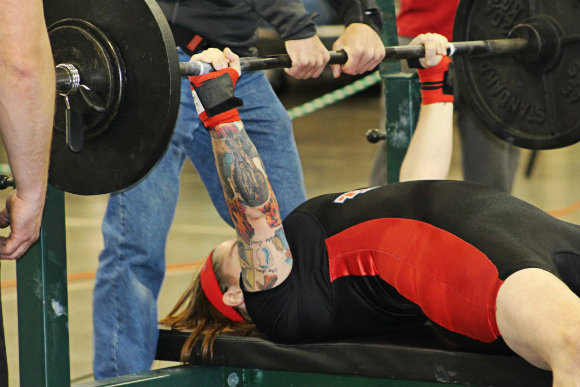
I paused and asked myself what it is that draws me to such an extreme physical practice and how I could describe it to my friend. Was there anything else I had ever done that I could compare my strength training to?
The closest parallel I could come up with were my experiences when I lived and trained at a residential Zen meditation center in upstate New York for a period during my early- and mid-twenties. Approximately nine times per year, we did a week-long silent meditation retreat. No eye contact, no talking, and long hours of meditation shaped each moment of each day. Through that experience came a clarity that doesn’t fit into words, where everything was just so, exactly what it was and no more, and I was right there in the midst of it.
What does that have to do with strength training?
As far as I’m concerned, everything.
Zen and the Art of Barbell Training
I am writing this having recently assisted at an SFL Barbell Instructor Certification in Boston at Skill of Strength. This is the third SFL I have attended and the second one at which I have assisted, and the awe I feel for the depth of detail that goes into each of the lifts taught over the course of the weekend increases each time I am lucky enough to attend.
Take, for instance, the front squat. Six pages into the manual’s step-by-step description of the barbell front squat comes the fourteenth step, “Squat.” That’s right: the point in the description of the squat where the squat actually happens follows pages of solid-gold material about the feet, breath, thoracic spine, wrists, fingers—the list goes on.
Another great example is the post The Subtle but Essential Role of the Triceps Brachii in the Deadlift by Chief SFL Dr. Michael Hartle. When people think of the muscles involved in the deadlift, the triceps brachii is hardly one of the first that comes to mind, and yet my experience echoes that of Dr. Mike—the more the triceps are engaged when deadlifting, the better.
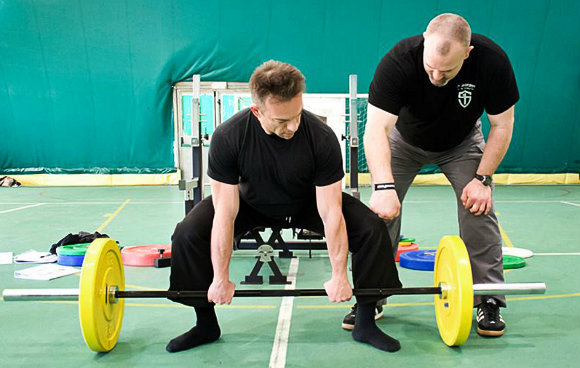
The quality of focus that goes into the set-up for a successful lift is unparalleled; while this can be seen in the lifts of the best-of-the-best lifters throughout history, it is available to people at all levels of experience after they are exposed to StrongFirst methods. In SFL Certifications, we talk about going through a “pre-flight checklist” when setting up for any lift. But here’s the thing: the checklist really is just the start. As anyone who has attended an SFL can attest, knowing what to do is one thing—and getting your set-up fully dialed in is quite another. So many times through the weekend people have “A-ha!” moments in which their team members’ vigilant eyes and skillful cues helped them bridge the gap between an okay set-up and a really, truly fully engaged set-up.
Then comes the challenge of duplicating that set-up again, and again, and again, and again, and again, dozens upon hundreds upon thousands of times.
And a person’s only chance—and I mean their only chance—of doing that is if they are fully present.
Just Lift
When I’m at my best, the entire world goes silent when I get ready for a lift. I tune out any sounds and sights, any of the people who are present, any stresses or worries—everything. From feet to head and back again, I come home to myself. I center my awareness in the pit of my belly—the part of the body that many practitioners of Japanese Buddhism, various martial arts, and Eastern medicine call the hara—and become aware of my breath. There is no thought of anything—there is only the attention I bring to my body and its position in that exact moment.
And in that silence, the lift happens.
During the SFL, Dr. Mike shared an anecdote about the day when he achieved his best-ever competition back squat to date at 705 pounds. “I don’t even remember making the lift,” he said. “I’ve seen the videos of it. I know it happened. I just don’t remember it.”
That is the quality of pure absorption in the moment that can happen after training a lift so many times that the movement isn’t something you do—it’s part of you. That feeling of being profoundly connected and present through a difficult effort is why I love training, both in the gym and in competitions.
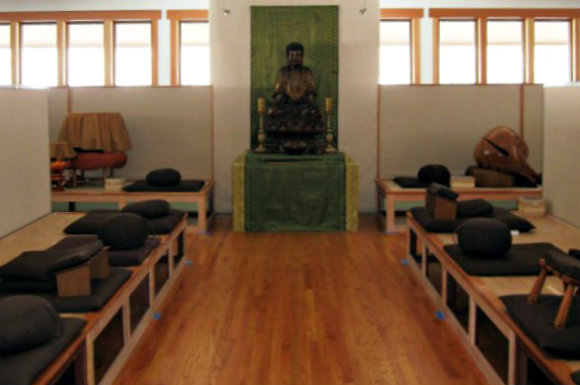
Radical Presence
We joke in SFLs about “Becoming One with the Bar.” The goal is to have your set-up be so engaged that you’re no longer lifting the weight, you’re just moving your body and the weight happens to be attached to you. But, truth be told, it’s not just a joke. It’s the potential of what can truly happen.
Of course, barbell work isn’t the only form of training that can help you get to that point of meditative, focused quality of presence. I’ve also experienced it with kettlebells, and Pavel wrote insightfully about this experience in his post titled The Will to Happiness. I have no doubt this level of complete focus is something all elite level athletes have in common. In fact, I have a sneaking suspicion that part of the love people have for watching professional sports is that something deep and primal within us wakes up when we witness the pure responsiveness that athletes are able to actualize when they are fully absorbed in what they are doing.
That primal part of us knows we have the capacity for that, too—and we long for it.
Does this mean that you have to be an elite level athlete to experience this quality of mindfulness? Not at all! You just need to be willing to be present. But this is the antithesis of the default settings of modern life, which tend more toward “pop an ibuprofen and binge watch Netflix while slouching” than it does toward “feel your feet on the ground and pay attention to what your breath and lats are doing.”
One could even say that, at this point in history, being fully present is so rare that it is a radical and revolutionary act.
Only One Thing
When coaching, I am conscious of integrating questions along with my cues. When first teaching someone a lift, I might tell them to engage their lats (or any other body part) or to adjust the rhythm of their breathing. However, once they become more comfortable with the movement, I might instead ask, “What are your lats doing?” “How about your knees?” or “Where is your breath?”
And immediately they correct whatever was off. I’ve never once seen someone who knew how to perform an exercise get into a worse position when asked questions along these lines. They know exactly what to do—as soon as they are present and paying attention to what their body is doing.
How amazing is that? When we are present, our bodies reflexively know what to do. We only need to do one thing: pay attention. And whatever the tool—whether kettlebells, barbells, or bodyweight—StrongFirst methods are uniquely equipped to encourage this level of mindfulness.
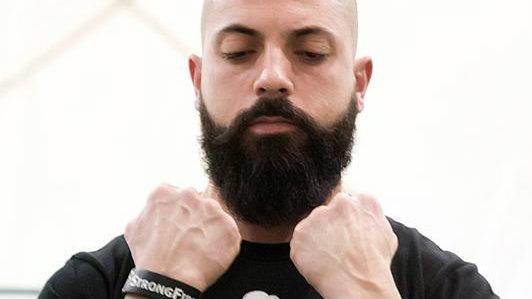
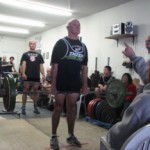
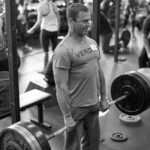
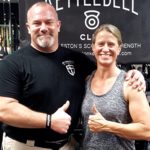
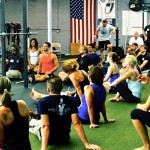


Very good insights. Question, do you think ‘lack of presence’ will affect the benefits as well? Case in paint, an hour of cardio (I see tons of people doing it in commercial gyms) while ‘tuned out’ listening to audio or watching TV. Thank you.
That is an interesting question! I don’t know the answer, although I certainly would hypothesize that there would be an effect: I wonder if anyone is aware of any studies that quantitatively compare the effectiveness of training relative to the degree of distraction and/or presence of challenge and skill requirements. If there aren’t any, some PhD candidate out there should get on that. 😉
Thanks Lore 🙂 I do like to think it (training with mind elsewhere) has less effect but hey it is better than doing nothing. You are right, it would be interesting to find a study about it.
“One could even say that, at this point in history, being fully present is so rare that it is a radical and revolutionary act.” – painfully true…
Great article. Thanks!
Made me remember I too can barely remember my best lifts. I remember approaching the bar to set-up, and I remember standing tall with the bar in hand… I just can’t seem to remember the set-up and lift…
When I think about it the same is true for my best beach volleyball matches as well … and dates, vacations, kisses…
Maybe I should start pay attention less and be more radical and revolutionary… 😉
Thanks Again!
I’m gonna quote your “…radical and revolutionary”
So true! Thank you.
Excellent!
Thank you, Cole!
“One could even say that, at this point in history, being fully present is so rare that it is a radical and revolutionary act.” YES! Great piece – great peace – Lore!
Thank you so much! I’ve seen you dance enough to know that you know that degree of presence: I’m so grateful to know and learn from you!
This is a great article. I hope to incorporate these points into my lifting. Thanks
Thank you for reading!